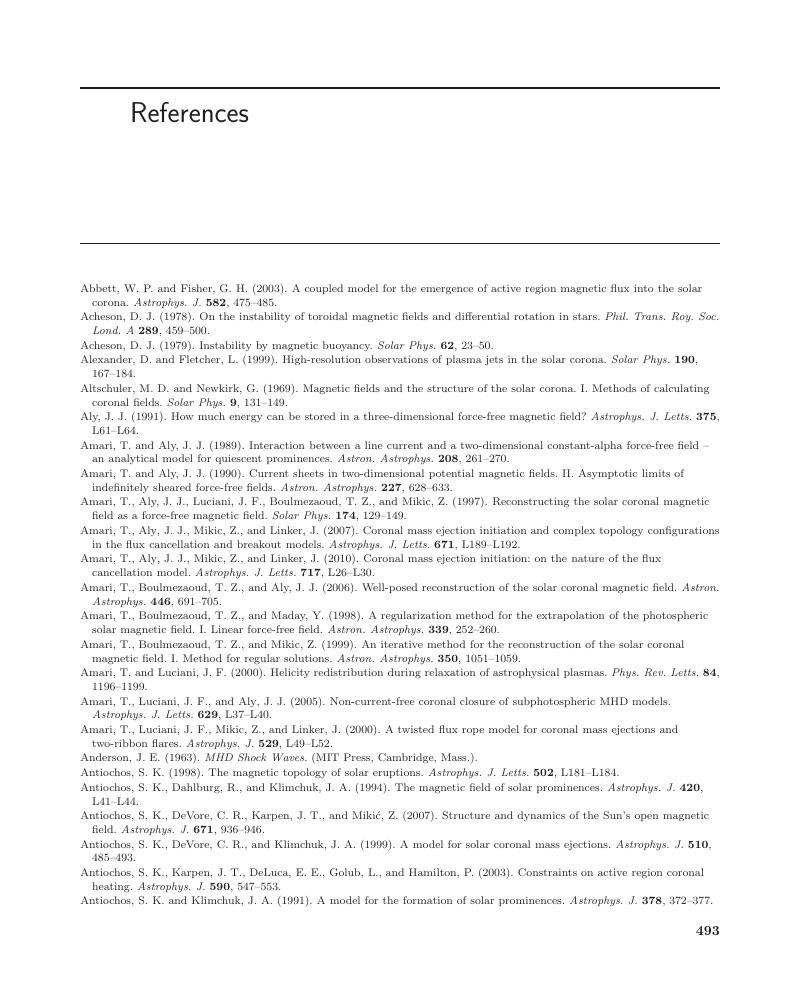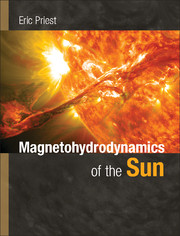Book contents
- Frontmatter
- Dedication
- Contents
- Preface
- 1 A Description of the Sun
- 2 The Basic Equations of Magnetohydrodynamics (MHD)
- 3 Magnetohydrostatics
- 4 Waves
- 5 Shock Waves
- 6 Magnetic Reconnection
- 7 Instability
- 8 Dynamo Theory
- 9 Magnetoconvection and Sunspots
- 10 Heating of the Upper Atmosphere
- 11 Prominences
- 12 Solar Flares and Coronal Mass Ejections
- 13 The Solar Wind
- Appendix 1 Units
- Appendix 2 Useful Values and Expressions
- References
- Index
- References
References
Published online by Cambridge University Press: 05 June 2014
- Frontmatter
- Dedication
- Contents
- Preface
- 1 A Description of the Sun
- 2 The Basic Equations of Magnetohydrodynamics (MHD)
- 3 Magnetohydrostatics
- 4 Waves
- 5 Shock Waves
- 6 Magnetic Reconnection
- 7 Instability
- 8 Dynamo Theory
- 9 Magnetoconvection and Sunspots
- 10 Heating of the Upper Atmosphere
- 11 Prominences
- 12 Solar Flares and Coronal Mass Ejections
- 13 The Solar Wind
- Appendix 1 Units
- Appendix 2 Useful Values and Expressions
- References
- Index
- References
Summary

- Type
- Chapter
- Information
- Magnetohydrodynamics of the Sun , pp. 493 - 542Publisher: Cambridge University PressPrint publication year: 2014
References
- 2
- Cited by



